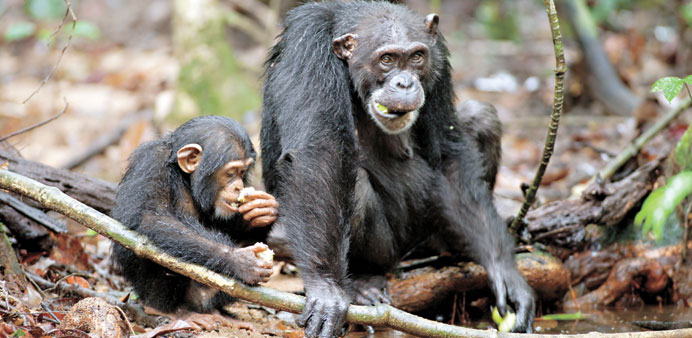By Ulrike von Leszczynski
Audiences have oohed and aahed over Disneynature’s Chimpanzee for the past year, enthralled at the true story of an orphaned chimp, Oscar, adopted by an unrelated male after his mother was killed.
But how true is a story if two or more chimpanzees are playing the role of Oscar? That is the question being asked by the film’s critics.
Renowned British filmmaker Alastair Fothergill sees the controversy, which ignited in Germany during the film’s May 2013 release, a year after the US premiere, as turning on the meaning of the word ‘true’.
“What is important to us is ... that it is scientifically accurate. There’s nothing contrived or artificial,” Fothergill said in an interview. “We constructed it to a certain extent. But it’s not a fake. It is a true story.”
Fothergill’s team did spend 700 days in the Ivorian jungle between September 2008 and September 2011. But the tale of Oscar as told by the film runs over four years.
A different animal was filmed to portray the early life of the film’s orphan hero. The filmmaker, who has worked with luminaries like David Attenborough on his BBC productions and whose previous projects include The Blue Planet and Planet Earth, acknowledges, “We wrote a long Hollywood-type script, expecting things to happen based on our experience of chimpanzees.” The adoption became the heart of the movie after the filmmakers observed it in the jungle.
The events did not happen in the exact chronological order as presented in the film, and not all in the same location, as suggested by the film.
Fothergill makes clear that he never intended Chimpanzee as a television documentary like those made with Attenborough, but to make a feature film with a true background.
“I think people understand that. It’s the nature of film-making. They want a strong story. They want strong characters,” he said.
Swiss primatologist Christophe Boesch, who works at Leipzig’s Max Planck Institute for Evolutionary Anthropology, was scientific consultant for the film crew.
Boesch has been conducting research in Africa for more than 20 years, publishing ground-breaking studies on chimpanzee behaviour. One of his central aims is to conserve these threatened animals and to create a lobby to protect them. A Disney film reaches a wide public. The professor seemed taken by surprise by the media attention the film has generated.
“As scientific consultant I had to make sure that it all corresponded to the behaviour of the chimpanzees of the Tai National Park,” he says, although he now acknowledges in retrospect that there were disadvantages in working with Disney.
“They have their rules. They make films in their own way,” Boesch says, adding that he had little influence over much of the filming.
“I had influence only on the scientific accuracy. I manoeuvred myself into a kind of trap, he says. But he insists that the story is based on true chimpanzee behaviour, even if the plot line has been reworked — and so the film is true from a scientific point of view.
“A nature film cannot be made like a Big Brother series,” Boesch told the German news magazine Focus, referring to reality-TV shows.
Editing of the scenes was needed to create a story, he insisted. The film crew could after all not ask the primates to repeat what they had just done.
What is true is that the crew stumbled on a kind of chimpanzee adoption that is exceptional in the wild — a case of supreme good fortune.
What is not true is that nature provides a happy end in cases like this. Around a half of all young chimpanzees die before the age of five. Oscar vanished and is almost certainly dead.
Fothergill may be well aware of that, but the average filmgoer is not. Asked whether these details could not have been made clear in the final credits, Fothergill says that would have let down the audience. “I think it’s very important not to break the mood. It breaks the experience,” he said. — DPA

* Oscar (left) and Isha eat sacoglottis fruit in a Ghana jungle.


